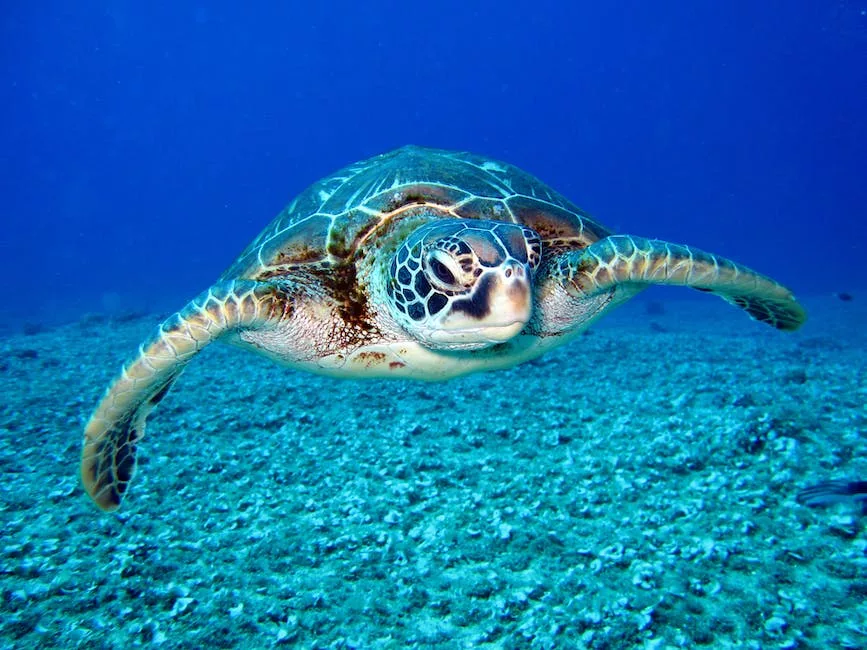Introduction
The Weekly Turtle Update is a regular report that provides information and updates on the status and conservation efforts of turtles around the world. It aims to raise awareness about the challenges faced by turtles and highlight the importance of their conservation. This update covers various topics such as population trends, habitat conservation, research findings, and conservation initiatives undertaken by organizations and individuals. By providing a comprehensive overview of the current state of turtles, the Weekly Turtle Update serves as a valuable resource for scientists, conservationists, and anyone interested in the well-being of these fascinating creatures.
The Importance of Consistent Turtle Monitoring

Welcome to our weekly turtle update! We’re here to talk about the importance of consistent turtle monitoring. Now, I know what you’re thinking. Turtles? Really? But trust me, these little guys are more important than you might think. Plus, they’re pretty cute too!
So, why is consistent turtle monitoring so important? Well, let me tell you. Turtles are not just adorable creatures that make for great Instagram photos. They play a vital role in our ecosystem. They help maintain the balance of our marine and freshwater environments. Without them, things could get pretty out of whack.
You see, turtles are like the janitors of the sea. They munch on algae and seagrass, keeping them in check. This prevents these plants from overgrowing and choking out other marine life. It’s like having a team of tiny landscapers working underwater. And who doesn’t love a well-manicured underwater garden?
But here’s the thing. Turtles are facing some serious threats. Pollution, habitat destruction, and climate change are just a few of the challenges they’re up against. That’s where consistent monitoring comes in. By keeping a close eye on turtle populations, we can better understand their needs and take action to protect them.
Now, I know what you’re thinking. How do you even monitor turtles? Do you give them little Fitbits to track their steps? Well, not exactly. Turtle monitoring involves a variety of methods, from tagging and tracking individual turtles to conducting surveys and collecting data on nesting sites.
By consistently monitoring turtle populations, we can track changes over time. We can see if populations are declining or if certain areas are becoming more vulnerable. This information is crucial for making informed decisions about conservation efforts.
But let’s not forget the most important part of turtle monitoring – the turtles themselves! These little guys are fascinating creatures. Did you know that some turtles can live for over 100 years? That’s right, they’ve got the whole aging thing figured out. Maybe we should take some notes.
And let’s not forget about their nesting habits. Female turtles travel long distances to lay their eggs on sandy beaches. It’s like their version of a tropical vacation. But sadly, these nesting sites are under threat from coastal development and human disturbance. By monitoring these sites, we can ensure that they remain safe and protected.
So, the next time you see a turtle, give them a little wave and say thanks. They’re doing important work, even if they don’t realize it. And remember, consistent turtle monitoring is not just about the turtles themselves. It’s about protecting our oceans and preserving the delicate balance of our planet.
So, let’s all do our part to support turtle monitoring efforts. Whether it’s volunteering, spreading awareness, or simply appreciating these amazing creatures, every little bit helps. Together, we can ensure that turtles continue to thrive for generations to come. And who knows, maybe one day we’ll even have a turtle president. Hey, a turtle can dream, right?
Fascinating Facts about Different Turtle Species
Welcome to our weekly turtle update! This week, we’re diving into the fascinating world of different turtle species. Get ready to be amazed by these incredible creatures and their unique characteristics. From the speedy leatherback turtle to the adorable red-eared slider, there’s a turtle for everyone to love.
Let’s start with the leatherback turtle, also known as the Usain Bolt of the turtle world. These magnificent creatures can reach speeds of up to 22 miles per hour in the water, making them the fastest swimmers among all turtle species. Just imagine a turtle zooming past you like a torpedo! It’s a sight to behold.
Now, let’s talk about the red-eared slider, the turtle equivalent of a fashionista. These turtles are known for their vibrant red patches on the sides of their heads, which resemble stylish earrings. It’s like they’re saying, “I’m not just a turtle, I’m a fashion icon!” These sliders are also popular pets, but be careful not to let them escape and start a trendy turtle revolution.
Moving on to the alligator snapping turtle, the heavyweight champion of the turtle world. These turtles can weigh up to a whopping 200 pounds, making them the largest freshwater turtles in North America. With their powerful jaws and spiked shells, they are the ultimate tough guys of the turtle kingdom. Just don’t get on their bad side, or you might end up with a bruised ego and a missing finger.
Now, let’s take a trip to the Galapagos Islands and meet the Galapagos giant tortoise, the grandpa of all turtles. These gentle giants can live for over 100 years, making them one of the longest-living vertebrates on Earth. They have witnessed the rise and fall of civilizations, the invention of the internet, and probably even the birth of some famous turtles. Talk about having a wealth of knowledge!
Next up, we have the hawksbill turtle, the artist of the turtle world. These turtles have a unique shell pattern that resembles a beautiful mosaic. In fact, their shells are highly sought after for their use in jewelry and other decorative items. But let’s not forget, these turtles are not just pretty faces. They also play a crucial role in maintaining the health of coral reefs by munching on sponges and algae. Talk about multitasking!
Last but not least, let’s talk about the loggerhead turtle, the world traveler of the turtle world. These turtles are known for their incredible navigation skills, as they can travel thousands of miles across oceans to return to their birthplace for nesting. It’s like they have an inbuilt GPS system! These turtles are true globetrotters, exploring the vastness of the ocean and reminding us of the wonders of our planet.
And that concludes our fascinating tour of different turtle species. From the speedy leatherback to the artistic hawksbill, each turtle has its own unique charm. So, the next time you spot a turtle, take a moment to appreciate its incredible qualities and remember that these amazing creatures have been around for millions of years, adding a touch of humor and wonder to our world.
Conservation Efforts to Protect Turtle Habitats
Conservation Efforts to Protect Turtle Habitats
Hey there, turtle enthusiasts! It’s time for your weekly turtle update, and today we’re diving into the wonderful world of conservation efforts to protect our shelled friends’ habitats. So grab your snorkels and let’s get started!
Now, turtles are pretty amazing creatures. They’ve been around for millions of years, surviving all sorts of challenges. But in recent times, their habitats have been under threat due to human activities. That’s where conservation efforts come in, like the superheroes of the turtle world.
One of the key strategies in protecting turtle habitats is creating protected areas. These are like exclusive resorts for turtles, where they can live and thrive without any disturbance from us pesky humans. These areas are carefully chosen to provide the perfect conditions for turtles to nest, feed, and just be their awesome turtle selves.
But creating protected areas is not as simple as drawing a line on a map and saying, “Hey, turtles, this is your spot!” It takes a lot of planning and collaboration between scientists, government agencies, and local communities. They work together to identify the most critical turtle habitats and establish rules and regulations to ensure their protection.
Another important aspect of turtle conservation is raising awareness. You see, turtles are not exactly the most vocal creatures. They can’t go around shouting, “Hey, humans, stop destroying our homes!” So it’s up to us to be their voice. Conservation organizations and passionate individuals organize campaigns, events, and educational programs to spread the word about the importance of turtle habitats and the need to protect them.
But let’s not forget about the turtles themselves. They play a crucial role in their own conservation efforts. How, you ask? Well, turtles are pretty sneaky when it comes to nesting. They find the perfect spot on a beach, dig a hole, lay their eggs, and cover them up like it’s a secret treasure. This natural behavior helps protect their eggs from predators and human interference.
But sometimes, even the best-hidden nests can be discovered by unwanted visitors. That’s where dedicated volunteers come in. These brave souls patrol the beaches, day and night, to ensure that no harm comes to the precious turtle eggs. They’re like the night watchmen of the turtle world, armed with flashlights and a passion for protecting these little bundles of joy.
And let’s not forget about the power of technology in turtle conservation. Scientists are using all sorts of fancy gadgets to track turtles’ movements, monitor their populations, and gather valuable data. From satellite tags to underwater cameras, these high-tech tools are helping us understand turtles better and make informed decisions to protect their habitats.
So there you have it, folks! Conservation efforts to protect turtle habitats are in full swing, and it’s all thanks to the dedication of scientists, volunteers, and passionate individuals like you. Together, we can ensure that turtles continue to grace our oceans and beaches for generations to come. So keep spreading the word, supporting conservation organizations, and maybe even consider becoming a turtle superhero yourself. After all, who wouldn’t want to save the day while wearing a shell?
Conclusion
In conclusion, the weekly turtle update provides valuable information about the well-being and progress of turtles. It serves as a means to track their growth, health, and conservation efforts. The update helps raise awareness about the importance of protecting turtles and their habitats, ultimately contributing to their long-term survival.



